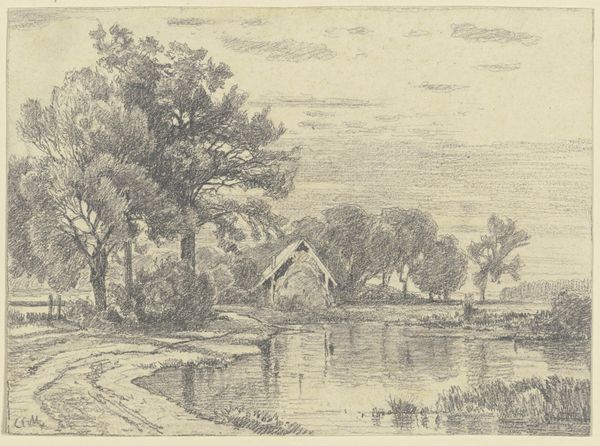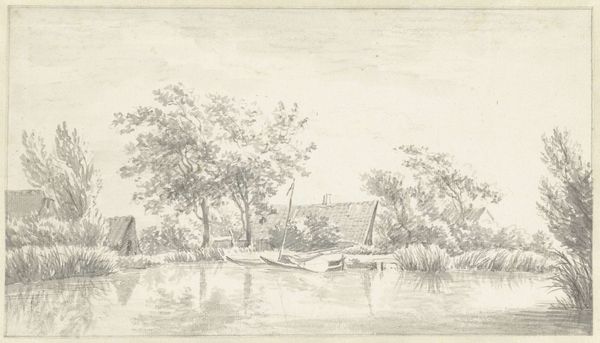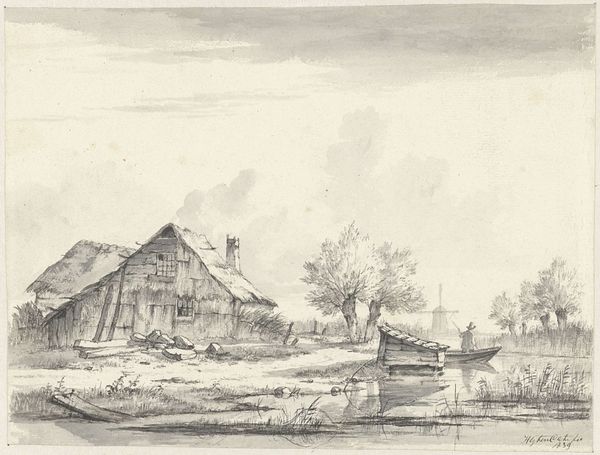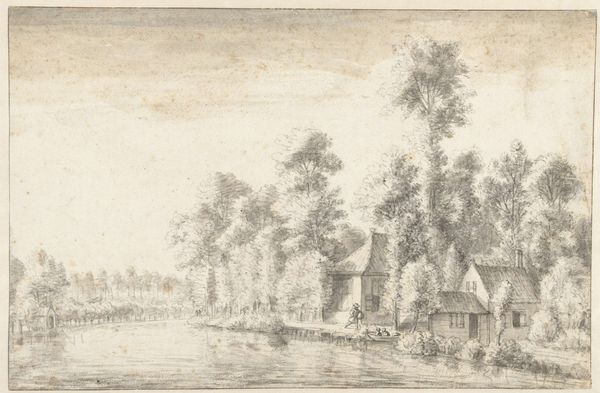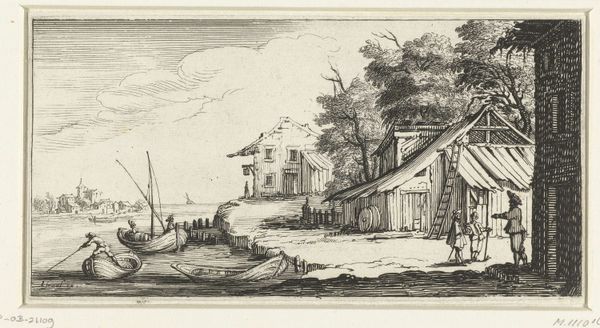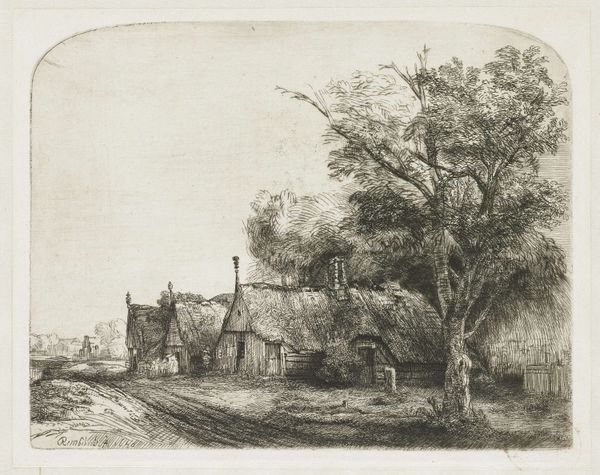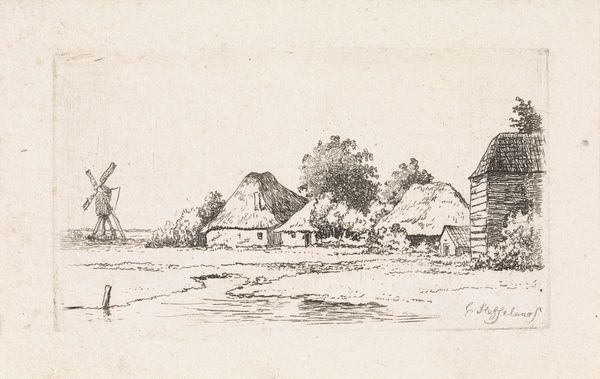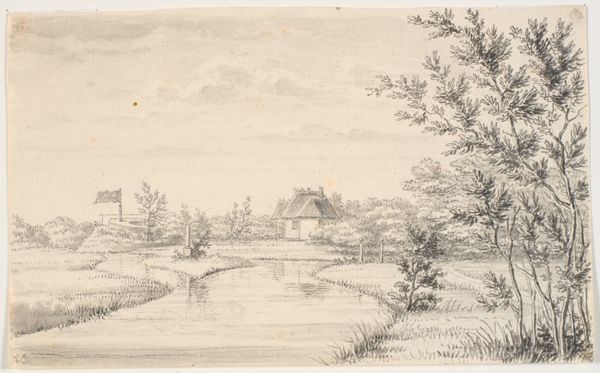
drawing, etching, ink
#
drawing
#
etching
#
landscape
#
ink
#
romanticism
Dimensions: width 119 mm, height 78 mm
Copyright: Rijks Museum: Open Domain
Jacques Van Gingelen made this etching, "Landscape with Farmhouse," sometime in the 19th century. The etching process itself involves applying acid to a metal plate to create an image. It's an indirect process; the artist scratches an image through a wax coating, then bathes the plate in acid. The acid bites into the metal where the wax has been removed, creating recessed lines that hold ink. The result is a print with a unique character, line work that has a delicate, almost feathery quality. The acid does the work of defining each line, imbuing the scene with a subtle texture. It also implies a certain detachment, a separation between the artist's hand and the final print, unlike the directness of a drawing. Van Gingelen's choice of etching speaks to a moment when printmaking was becoming increasingly important, both as a means of artistic expression, and of communicating a sense of place. Considering the work involved in etching, this print is less about pure artistic skill, and more about the cultural value of landscape imagery.
Comments
No comments
Be the first to comment and join the conversation on the ultimate creative platform.

